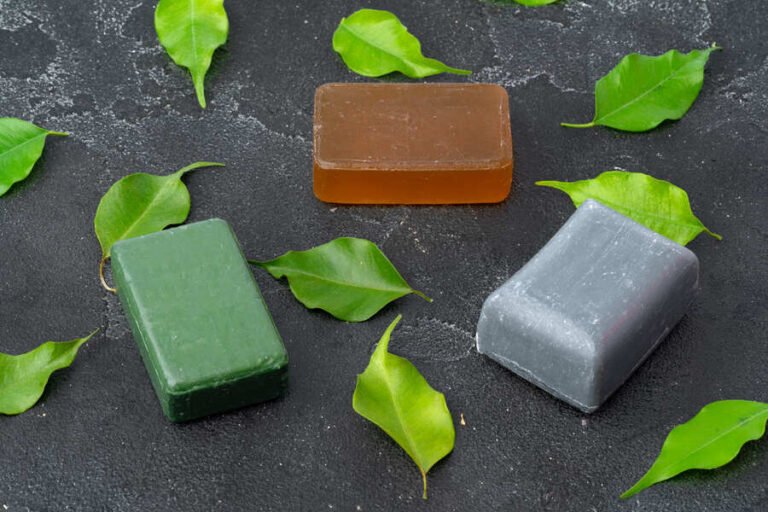Looking to unleash the full potential of your skincare routine? Incorporating glycolic acid and niacinamide can be the key to achieving healthier, more radiant skin.
With glycolic acid's exfoliating power and niacinamide's ability to improve your skin's barrier function, hydration, and appearance, these two ingredients offer a range of benefits for different skin concerns.
In this article, we'll guide you on how to effectively use glycolic acid and niacinamide, recommend products, and address common questions.
Get ready to liberate your skincare routine with these dynamic ingredients.
Key Takeaways
- Glycolic acid and niacinamide can be used together, but different pH levels may cause irritation.
- It is recommended to use niacinamide in the morning and glycolic acid at night to minimize irritation.
- Start with lower concentrations of both ingredients and adjust based on skin type and sensitivity.
- Apply moisturizer and sunscreen after applying either glycolic acid or niacinamide, and use sunscreen during the day, especially with glycolic acid, as it can increase photosensitivity.
Benefits of Glycolic Acid and Niacinamide
Discover the amazing benefits of incorporating glycolic acid and niacinamide into your skincare routine.
Glycolic acid, derived from sugarcane, is a powerful exfoliator that unclogs pores, prevents breakouts, and stimulates collagen production. It also helps even out skin tone and reduce hyperpigmentation.
Niacinamide, a water-soluble vitamin B3, improves hydration, stimulates collagen production, fights acne, and brightens the skin. It also has anti-inflammatory properties, soothing any irritation or redness.
Both ingredients offer unique advantages for different skin concerns. Glycolic acid is ideal for aging skin, hyperpigmentation, and acne-prone skin, while niacinamide is suitable for mature, oily or acne-prone, dry or dehydrated, hyperpigmented, and sensitive skin.
Remember to patch test and consult a dermatologist for sensitive skin or adverse reactions.
Who Should Use Glycolic Acid and Niacinamide
If you have aging skin, hyperpigmentation, acne-prone skin, or normal to oily skin, you should use glycolic acid and niacinamide in your skincare routine.
Glycolic acid is ideal for these skin types because it exfoliates the skin, unclogs pores, prevents breakouts, stimulates collagen production, and evens out skin tone.
Niacinamide, on the other hand, is suitable for mature, oily or acne-prone, dry or dehydrated, hyperpigmented, and sensitive skin. It improves hydration, stimulates collagen production, fights acne, brightens the skin, and soothes inflammation.
However, it's important to patch test and consult a dermatologist, especially if you have sensitive skin or are concerned about potential adverse reactions. This will help ensure that glycolic acid and niacinamide are suitable for your specific skin type and concerns.
Using Glycolic Acid and Niacinamide Together
Combine glycolic acid and niacinamide in your skincare routine for maximum benefits. When using these two ingredients together, it's important to consider the pH levels and timing of application to minimize irritation. Glycolic acid has a lower pH, making it more acidic, while niacinamide has a higher pH.
Applying niacinamide in the morning and glycolic acid at night can help prevent potential irritation. Start by applying glycolic acid first, waiting 15 to 30 minutes, and then applying niacinamide. This allows the skin to adjust to the acidic pH of glycolic acid before introducing niacinamide.
It's also important to start with lower concentrations of both ingredients and adjust based on your skin type and sensitivity. Remember to always apply a moisturizer and sunscreen after using either ingredient to protect your skin.
Risks and Precautions of Glycolic Acid and Niacinamide
To minimize the risks and ensure your safety, it's important to follow certain precautions when using glycolic acid and niacinamide in your skincare routine. Here are the key risks and precautions you should be aware of:
- Potential side effects: Both glycolic acid and niacinamide can cause skin irritation, especially if used improperly or in high concentrations. This can lead to redness, dryness, and possible post-inflammatory hyperpigmentation (PIH).
- Proper application techniques: It's crucial to apply moisturizer and sunscreen after using either ingredient to protect your skin. Sunscreen is especially important during the day when using glycolic acid, as it can increase photosensitivity.
- Monitoring for adverse reactions: If you experience any adverse reactions, such as severe irritation or allergic reactions, reduce the frequency of use or discontinue altogether.
Product Recommendations for Glycolic Acid and Niacinamide
For your skincare routine, you can consider using products that contain both glycolic acid and niacinamide. These two ingredients work synergistically to address various skin concerns and provide multiple benefits.
When looking for the best glycolic acid and niacinamide products, it's important to choose those with suitable concentrations for your skin type and concerns. Some recommended products include The Ordinary Glycolic Acid 7% Toning Solution and Niacinamide 10% + Zinc 1% as well as COSRX AHA 7 Whitehead Power Liquid.
Incorporating glycolic acid and niacinamide into your skincare routine is simple. Apply glycolic acid at night, followed by a 15 to 30-minute wait time, and then apply niacinamide. Remember to start with lower concentrations and adjust as needed.
Always moisturize and apply sunscreen afterward to protect your skin.
Frequently Asked Questions
Can I Use Glycolic Acid and Niacinamide Together if I Have Sensitive Skin?
Yes, you can use glycolic acid and niacinamide together if you have sensitive skin. However, it's important to do a patch test and consult a dermatologist to ensure skincare compatibility and prevent irritation.
Can I Use Glycolic Acid and Niacinamide Together if I Have Dry Skin?
Yes, you can use glycolic acid and niacinamide together if you have dry skin. The combination can help exfoliate, hydrate, and improve skin texture. Start with lower concentrations and moisturize afterwards for best results.
Can I Use Glycolic Acid and Niacinamide Together if I Have Acne-Prone Skin?
Yes, you can use glycolic acid and niacinamide together if you have acne-prone skin. They can help unclog pores, prevent breakouts, and improve hydration. Patch test and start with lower concentrations to avoid irritation.
How Long Should I Wait Between Applying Glycolic Acid and Niacinamide?
To minimize irritation, wait 15 to 30 minutes between applying glycolic acid and niacinamide. This is especially important if you have sensitive, dry, acne-prone, or mature skin.
Can I Use Glycolic Acid and Niacinamide Together if I Have Mature Skin?
Yes, you can use glycolic acid and niacinamide together if you have oily skin. Glycolic acid helps with exfoliation and preventing breakouts, while niacinamide improves hydration and fights acne. Start with lower concentrations and adjust based on your skin type and sensitivity.
Conclusion
Incorporating glycolic acid and niacinamide into your skincare routine can greatly improve the health and appearance of your skin.
Glycolic acid helps to unclog pores and even out skin tone, while niacinamide improves hydration and the skin's barrier function.
By using these ingredients together, you can address various skin concerns such as aging, hyperpigmentation, and acne.
However, it's important to be cautious of pH levels to avoid irritation.
Consult with a skincare specialist or dermatologist for expert guidance on product recommendations and usage instructions.
Unleash the power of these dynamic ingredients for radiant, healthy skin.







